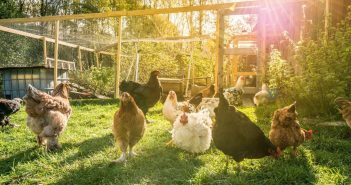Or How To Extend Your Piggie’s Lifespan
Guinea pigs, originating from Peru and Bolivia, are wonderful pets – cute, social, yet inexpensive and relatively easy to take care of. However, most beginner guinea pig owners don’t know much about the animals. In fact, guinea pigs, like other small rodents, are rather delicate and an illness contracted for instance by a cold draft can be fatal for them within a very short period of time.
The most common mistakes made by inexperienced guinea pig owners include the following:
10) Wrong cage placement. Both too hot or too cold temperatures are bad for guinea pigs. They can easily get heatstroke at temperatures of above 90F (30C), but can also freeze at temperatures below 70F (10C). Drafts are to be avoided as well, since they can cause pneumonia.
9) Mistakes when handling. The correct way to pick up and hold a guinea pig is by placing one hand below the body, with the thumb around a front leg, and supporting the weight with the second hand below the hindquarters. A guinea pig should never be pulled by the fur or by a leg.
8) Not clipping nails. This should be done regularly, at least once a month, since the nails grow and get in the way of the guinea pig. If a long nail breaks, it may lead to infections and abscesses.
7) Using a wire mesh bottom cage. This is not a good idea with guinea pigs, since their small feet slip through the mesh and get irritated by the metal, causing foot sores and an illness called bumblefoot. A solid floor cage with a soft bedding like pelleted paper is much better.
6) Placing a boar and a sow together without being prepared for the consequences – a bunch of little guinea pigs. If not neutered, male and female guinea pigs put together will in all likelihood mate and cause offspring. Breeding guinea pigs is in general not recommended if you are not fully aware of the consequences.
5) Not making the house guinea-pig-proof. There are numerous danger in a typical household for a guinea pig on the loose. The most obvious ones include anything that moves – be it people, doors, things that can fall down, or anything that can squeeze a guinea pig. Another one is cables – guinea pigs chew everything in sight, and electric cables are not very good food! Green plants are another potential threat to guinea pig health – a lot of them (such as ficus or azalea) cause food poisoning if chewed on.
4) Not cleaning the cage regularly and often enough. Guinea pigs are clean animals and feel miserable in a dirty cage. Bad hygiene is also often the reason for infections and various serious diseases. A guinea pig cage should be thoroughly cleaned at least once a week (better twice), with the whole
bedding renewed. Food bowls and the water tube should be cleaned daily.
3) Not providing enough space and exercise. A sight seen very often is a guinea pig hunched in the corner of a small cage, barely moving from that spot all day. Combined with unrestricted dry food access, this is a sure way to make a guinea pig overweight and thus significantly reduce its lifespan. For guinea pigs, the same basic principle applies as for humans – leaner is better. A healthy guinea
pig should feel firm to the touch, not soft and wobbly. Methods to ensure that your guinea pig is in good shape and not overweight include enough space (at least 3-4 sq.ft for an adult guinea pig), toys to play with, regular exploration forays outside of the cage, and restricted food access (for instance, feeding twice a day).
2) Incorrect bedding. Wood shavings in particular, although very frequently used, are not a good bedding for guinea pigs. They can cause foot sores, injuries to the cavies’ delicate eyes, and wood dust which often accompanies shavings causes respiratory (lung) problems. Some kinds of wood, such as
cedar or redwood, also contain oily components that can also cause allergies and illnesses with guinea pigs.
1) Improper food. This is probably the most frequent cause of illnesses and deaths among pet guinea pigs. In particular, feeding a lot of moist vegetables such as lettuce can cause diarrhea, which can be lethal for a guinea pig within one or two days. Insufficient access to water (for instance, failure to notice that a gravity water bottle’s ball was stuck and the guinea pig cannot drink enough) leads to dehydration and is also quite dangerous. Providing water in open bowls instead of a bottle can lead to contamination with droppings and bedding material and various infections as a result.
By avoiding these mistakes you are on a good way towards having a healthy and happy guinea pig with a long lifespan. However, there are more issues that we could not cover in this short article. If you want to read more about proper guinea pig care, our comprehensive guide at www.cavyguide.com answers all guinea pig questions you might have.



